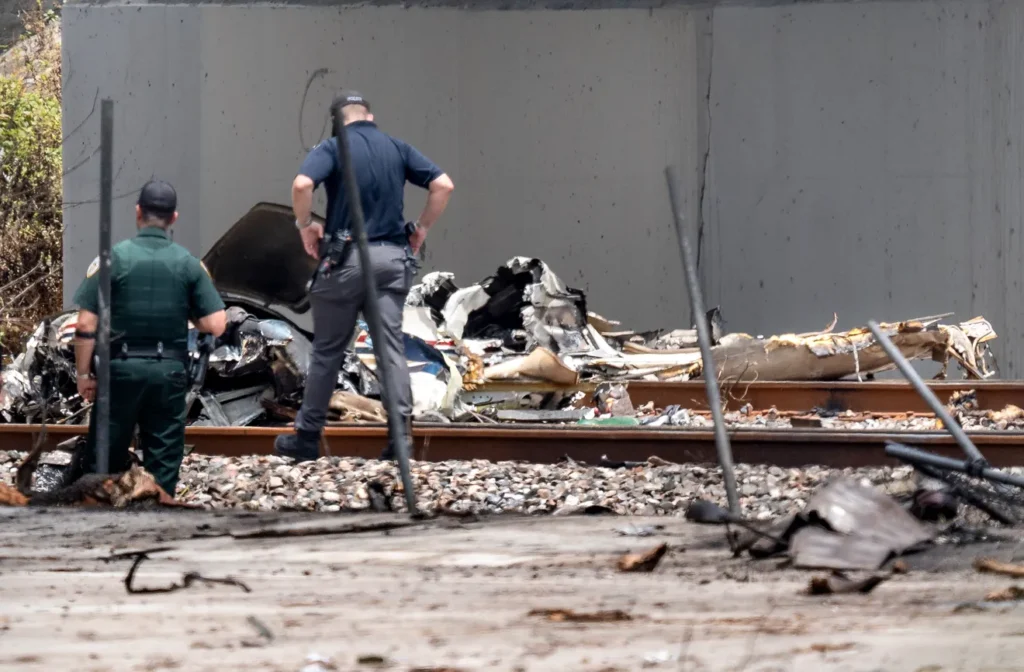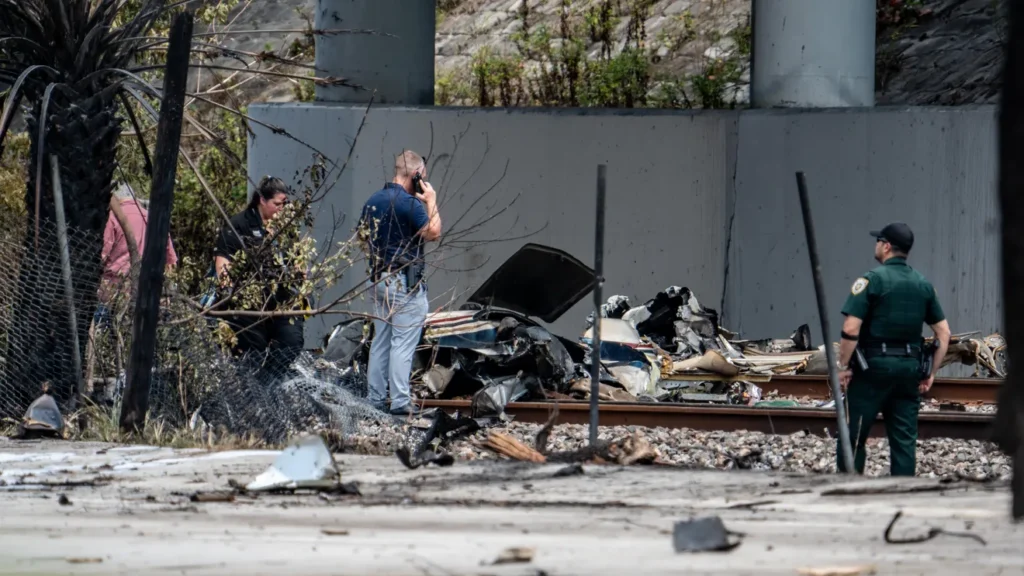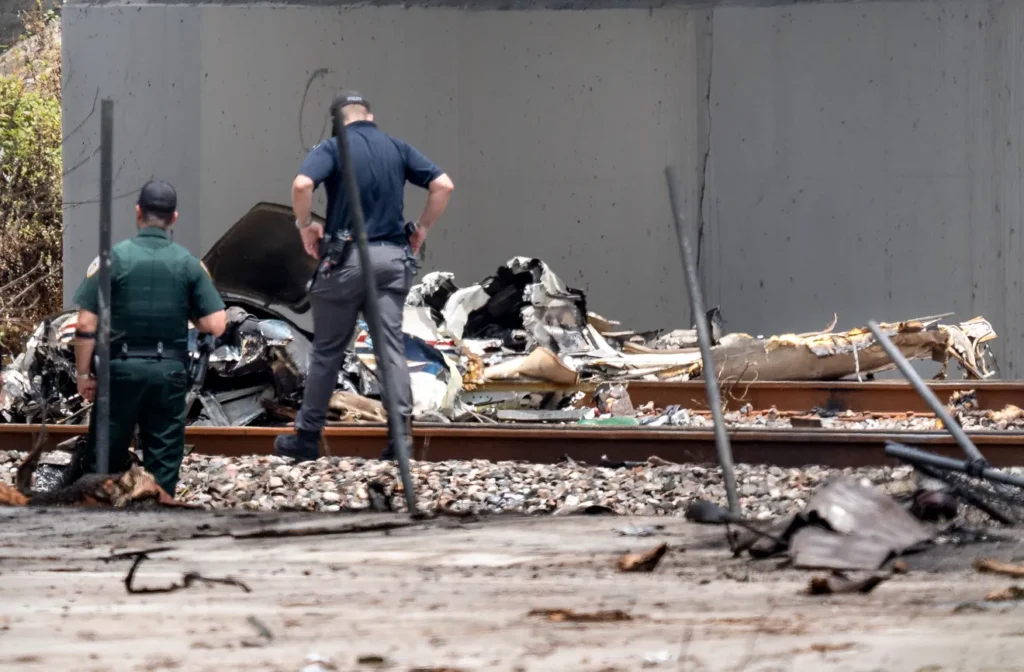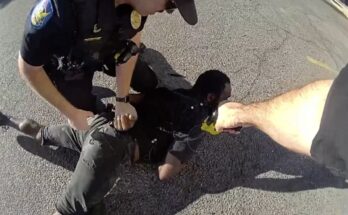
The airline tracking website Flightradar24.com showed the Tallahassee-bound aircraft making multiple left loops over Boca Raton before crashing along Military Trail, killing all three onboard.
A Cessna 310 crashed in Boca Raton shortly after takeoff on April 11, killing all three passengers.
Experienced pilot Matthew “Whiz” Buckley suggested a rudder issue may have caused the crash, praising the pilots for keeping the plane airborne for 8-10 minutes.
The victims were identified as Robert Stark, Stephen Stark, and Brooke Stark, who were on their way to visit Florida State University.
While the crash is under investigation, the AOPA reports that general aviation crashes and fatalities are trending downward.
The NTSB is expected to release a preliminary report within 30 days.
BOCA RATON — One local pilot with four decades of aviation experience said it was remarkable the pilot of the six-seater Cessna 310 plane that crashed moments after taking off from the Boca Raton Airport was able to keep the plane in the air for as long as he did.
“I’m shocked they didn’t crash immediately after takeoff,” said Matthew “Whiz” Buckley, an F/A-18 fighter pilot and former commercial pilot for American Airlines.
The plane was airborne for about 10 minutes April 11 before it crashed, killing all three of its occupants.
Buckley pinpointed a likely problem with the rudder and said he’d never seen anything like it. The rudder moves the nose of the plane left or right, affecting the direction. Pilots use pedals to control the rudder’s movement.

“As soon as they rotated to get airborne, that jet probably tried to roll upside down into the ground,” he said. “It required absolute insane airmanship to try and even stay in the air as long as they did.”
Early reports indicate a mechanical issue and a rudder issue would explain the plane’s flight path, which, according to the airline tracking website Flightradar24.com, showed the aircraft making multiple left loops over Boca Raton before crashing along Military Trail.
The Tallahassee-bound plane had departed from Boca Raton Airport shortly after 10 a.m. and maneuvered in multiple circles close to the ground, Kurt Gibson, a National Transportation Safety Board investigator, said the day of the crash.
The victims were Robert Stark, 81, of Boca Raton; and Stephen Stark, 54, and Brooke Stark, 17, both of Delray Beach.
The elder Starks were the grandfather and father of Brooke Stark, the teenager on board, said Buckley, a friend of the family. Both Robert and Stephen Stark were certified pilots, Federal Aviation Administration records show.
“They were battling that airplane to bring it down safely, to save this young girl,” Buckley said. “These two guys are heroes, easily. They really fought that airplane.”

Buckley said Brooke, who was a senior at Atlantic High School and a friend of his daughter, was considering attending Florida State University and the family was taking a trip to visit the school for the weekend.
Boca plane crash: Are aviation crashes escalating nationwide?
After the plane made a series of loops in the air, witnesses said it was dangerously close to the ground before it crashed onto Military Trail near Glades Road, erupting into flames and sending up large plumes of smoke visible from nearby homes, schools and offices.
The crash did not directly hit anyone on the ground, but it forced a northbound driver of a 2017 Toyota Prius, Pablo Tafur, 24, to swerve and hit a tree, police said. Tafur, who suffered minor injuries, was able to exit the car and find safety despite being surrounded by fireballs and smoke.
The Boca Raton crash happened just a day after a sightseeing helicopter plunged into the Hudson River in New York City, killing all six of its passengers. The Aircraft Owners and Pilots Association issued a news release Monday, urging the aviation community to double down on safety practices.
“While investigations into each accident are ongoing, they serve as reminders for all pilots that vigilance and a strong safety mindset are essential to every flight,” the release read.
Despite the recent tragedies, the release stated that the AOPA Air Safety Institute analyzed NTSB data and found general aviation accidents were down 21% compared to 2024. Fatalities had also dropped 16% over the same period, continuing what the AOPA called a “more than 30-year trend of declining general aviation accident and fatality rates.”
Boca plane crash: When will the NTSB have results of its initial investigation?

NTSB is leading an investigation into the Boca Raton crash. The standard procedure for NTSB is to issue a preliminary report within 30 days, followed by a 12-24 month report that will offer final analysis and probable cause for the crash.
“By now, everyone has seen the headlines from the last few days,” AOPA Air Safety Institute Senior Vice President Mike Ginter said. “Our hearts are broken for the families of those who died in the aircraft accidents in New York and Florida. It’s important not to speculate about what caused these crashes until the NTSB has completed their detailed investigation, and it’s also important to look at current trends in the data.”
According to the release, to help refocus attention on proactive safety measures, more than 5,000 pilots have participated in the National Pause for General Aviation Safety, a six-month campaign launched this month by the AOPA Air Safety Institute in partnership with the FAA and 22 aviation organizations.
“Aviation safety is under a microscope, and understandably so,” Ginter said. “The National Pause for General Aviation Safety was launched because general aviation is safer than ever, but there is always room to improve. Our goal is to reach every general aviation pilot in the country and continue the downward trend of accident rates.”


